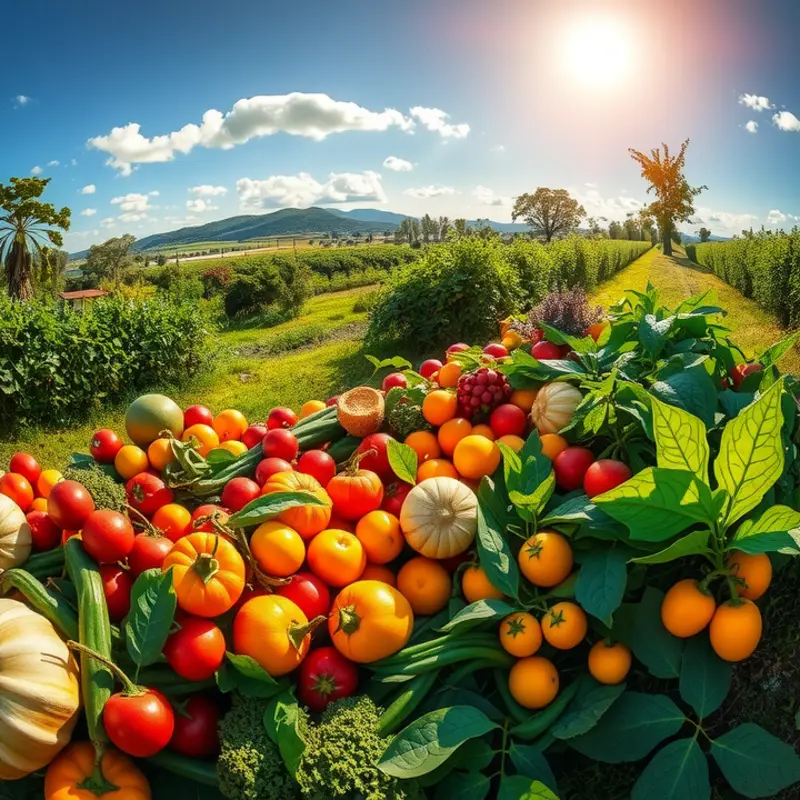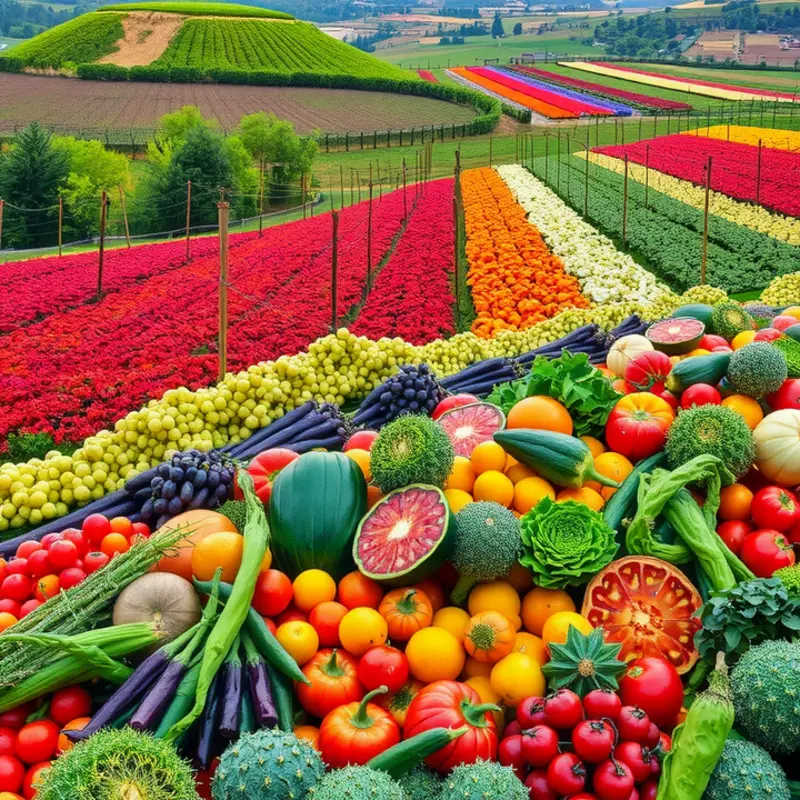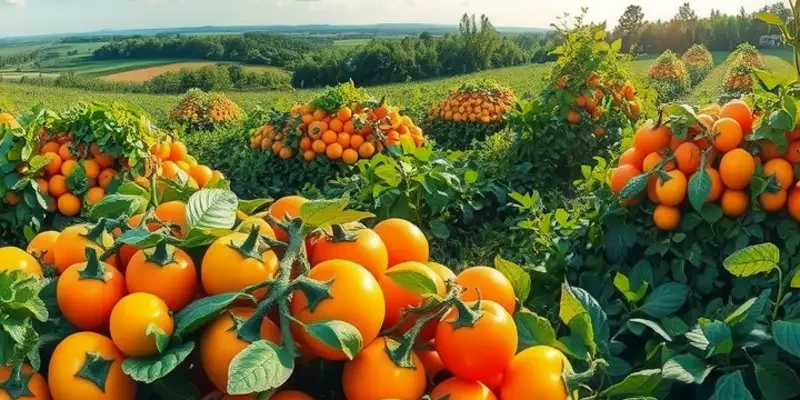Every culture has its unique way of celebrating, and food plays an essential role in these festivities. From colorful street markets to communal feasts, festival foods reveal a lot about the traditions, beliefs, and histories of different communities. This exploration of global festival foods invites culinary enthusiasts and culturally curious readers to partake in an immersive journey across borders and flavors, igniting a deeper appreciation for gastronomy’s power to unite us all.
Vibrant Celebrations: The Essence of Food at Festivals

Festivals offer a glimpse into the heart of a culture, and the dishes served during these celebrations are no exception. They are not merely culinary delights but are steeped in rich symbolism and tradition. Across the globe, foods served during festivals are a testament to cultural heritage, showcasing a beautiful blend of history, culinary craftsmanship, and the human spirit.
In India, Diwali, the festival of lights, marks a time of indulgence in sweet delights. Diwali sweets, known as ‘mithai’, are as varied in flavors as they are in shapes. Each sweet treat carries its own significance and is often prepared as an offering to deities. Favorites such as ‘ladoos’, ‘jalebi’, and ‘barfi’ are made from an array of ingredients including milk, sugar, and nuts, each symbolizing prosperity and joy. These sweets are lovingly shared with family and friends, reinforcing social bonds and ensuring that the light of Diwali shines bright in the hearts of everyone.
Moving to Mexico, Día de los Muertos, or Day of the Dead, is celebrated with the iconic pan de muerto, a bread that holds great significance during this time. Traditionally, this sweetened bread is decorated with bone-like designs to honor and remember loved ones who have passed. The vibrant festivities surrounding Día de los Muertos embrace the cycle of life and death, and the sharing of food, especially pan de muerto, is a way of celebrating the lives of departed souls, inviting them to partake in the world of the living.
In the vibrant atmosphere of Italian Carnevale, food plays a central role. Deep-fried delights like ‘chiacchiere’, thin and crispy strips of dough dusted with powdered sugar, are particularly popular. These festive foods not only add flavor to the celebrations but also come with historical connections, reminiscent of ancient Roman times when similar treats were enjoyed. Carnevale, a time of disguise and revelry, sees communities come together to enjoy a bounty of flavors, connecting past traditions with present celebrations.
These examples reflect the universal nature of honoring traditions through food, providing a unique lens to understand cultural identities. The dishes serve as a bridge between generations, subtly passing on stories and traditions. For more insights into the influence of culinary traditions on modern food practices, read about global culinary influences. The vibrant celebrations of life, history, and community, coupled with the sharing of delicious and meaningful foods, are what make global festivals profound yet delightful experiences. Each bite is a taste of history and a celebration of the present, fostering a deeper appreciation of cultural diversity worldwide.
Culinary Treasures: Distinct Festival Delicacies from Around the World

Celebratory foods hold a profound connection to cultural identity, encapsulating flavors and stories passed down through generations. In South Korea, festivals are incomplete without tteok, a beloved rice cake made with ingredients like sweet rice, red bean paste, or dried fruits. Prepared through a meticulous process involving steaming and pounding, tteok can symbolize prosperity and good fortune, bringing families closer during momentous occasions. This chewy delicacy is prominently featured in ceremonies such as weddings and Lunar New Year, reaffirming the bonds of family and community.
Japanese celebrations during the New Year are brightened by colorful mochi rice cakes. With a heritage deeply rooted in Shinto beliefs, consuming mochi during this time is believed to bring health and longevity. The traditional preparation method, known as mochitsuki, is an energetic event that involves pounding boiled rice into a sticky paste. Participants gather to share in the labor and joy of creating these smooth, pliable cakes, usually filled with sweet red bean paste or adorned with soybean flour. By sharing mochi, families and friends reinforce their connections and prepare for a prosperous year ahead.
Moving to the Western hemisphere, the Thanksgiving turkey in the United States embodies the spirit of gratitude and communal collaboration. Brought to tables with a myriad of herbs and spices, the turkey serves as the centerpiece of a lavish meal. Thanksgiving, celebrated on the fourth Thursday of November, reminds Americans of historic connections to the autumn harvest and community cohesion. While regions may vary in their stuffing or roasting techniques, the turkey universally brings people together to give thanks and share abundance.
Each of these dishes offers a unique narrative but shares a common thread of fostering unity and preserving cultural heritage. The preparation of such foods goes beyond mere cooking; it’s an act of storytelling that upholds the past while celebrating the present. Similarly, learning about different culinary traditions can broaden our understanding of global cultures. For more on the intricate blend of culinary traditions and trade influences, consider exploring further here.
As food continues to be an integral part of cultural festivities, it draws a vivid tapestry where taste and tradition intertwine. Traditional festival foods offer not just nourishment but also a window into the cultural psyche, where each bite can transport one to a realm of shared histories and futures. Through these culinary treasures, we partake in a universal celebration of the human spirit.
Final words
Food is a universal language, and at the heart of festivals, it serves as a bridge between generations and cultures. As you savor the delicious diversity represented in these global festival foods, you reflect on the customs and celebrations that define communities around the world. Each dish tells a story, encapsulating history, tradition, and identity, bringing people together in unity and joy. The next time you sink your teeth into a new culinary delight, remember that you are tasting an age-old tradition, a moment of celebration shared with countless others.








